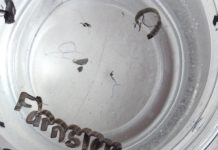 Plans are afoot for Missouri’s first algae biofuel facility. Saline County, MO, located two hours west of St. Louis, is in line to become home to what is being called one of the nation’s most promising innovations in alternative fuels. The oil extracted from algae can be converted into biodiesel, ethanol, crude and aviation fuels. Company officials say this site will focus on the production of ethanol.
Plans are afoot for Missouri’s first algae biofuel facility. Saline County, MO, located two hours west of St. Louis, is in line to become home to what is being called one of the nation’s most promising innovations in alternative fuels. The oil extracted from algae can be converted into biodiesel, ethanol, crude and aviation fuels. Company officials say this site will focus on the production of ethanol.
Algae Association.
Last July, the Saline County commissioners approved $141 million dollars in revenue bonds to finance a bio-refinery complex that will be home to this venture. Pure-Energy Corporation, a biofuel company located in Paramus, New Jersey, recently purchased the land for the facility, which will be known as EcoAlgae. Plans are underway for the construction of 2,000 one-acre ponds that will house green algae says the alternative energy company.
The U.S. Department of Energy states that, using current procedures, one acre of algae yields 30 times more fuel than the same area planted in soybeans. The agency also estimates that it would only require the amount of space equivalent to the state of Maryland to replace all of the petroleum based fuel used in the U.S. with algae fuel. Algae 2020 , a comprehensive market study released this month by Emerging Markets Online, claims a potential annual production of up to 10,000 gallons of oil per acre. Algae can reproduce every 6 hours, while it takes millions of years to produce crude oil in the ground, according to Joseph LaStella of a similar biofuel company, Green Star Products.
Biofuels made from corn and soybeans are already on the market, but critics contend that using these crops competes with their use as human food. Once processed into a fuel, the algal leftovers can be sold as a high protein and carbohydrate livestock feed supplement. Another potential benefit of algae farming is that it can directly recycle CO2 emissions from nearby industrial plants. Since algae feeds on sunlight and CO2, the greenhouse gas would be recycled naturally.
Construction of the algae facility will begin fourth-quarter 2009, and be completed by fourth-quarter 2010, says Irshad Ahmed, President and CEO of Pure-Energy. Any project of this scale has many obstacles to overcome, he tells SciJourner. “I am surprised at how fast, how far the project has come in so short of a time.”
According to Ahmed, the Saline County project will be the first of its kind with several biofuel technologies integrated under one roof. Phase I will involve the use of landfill biomass to generate fuel while the later development of Phase II will include the algae biofuel facility. Pure-Energy is involved in seven similar projects, one each in India, Costa Rica and Canada, and four others in the U.S.
Despite Ahmed’s promises, some local residents are skeptical. “I would wager any amount that zero of what is talked about here ever comes to fruition–that is the modus operandi, talk a lot and produce nothing, or as the old saying goes 'all hat and no cattle',” read one web-posting on the Marshall-Democrat newspaper site. Trish Baker

This work is licensed under a Creative Commons Attribution-NonCommercial-NoDerivs 3.0 Unported License













